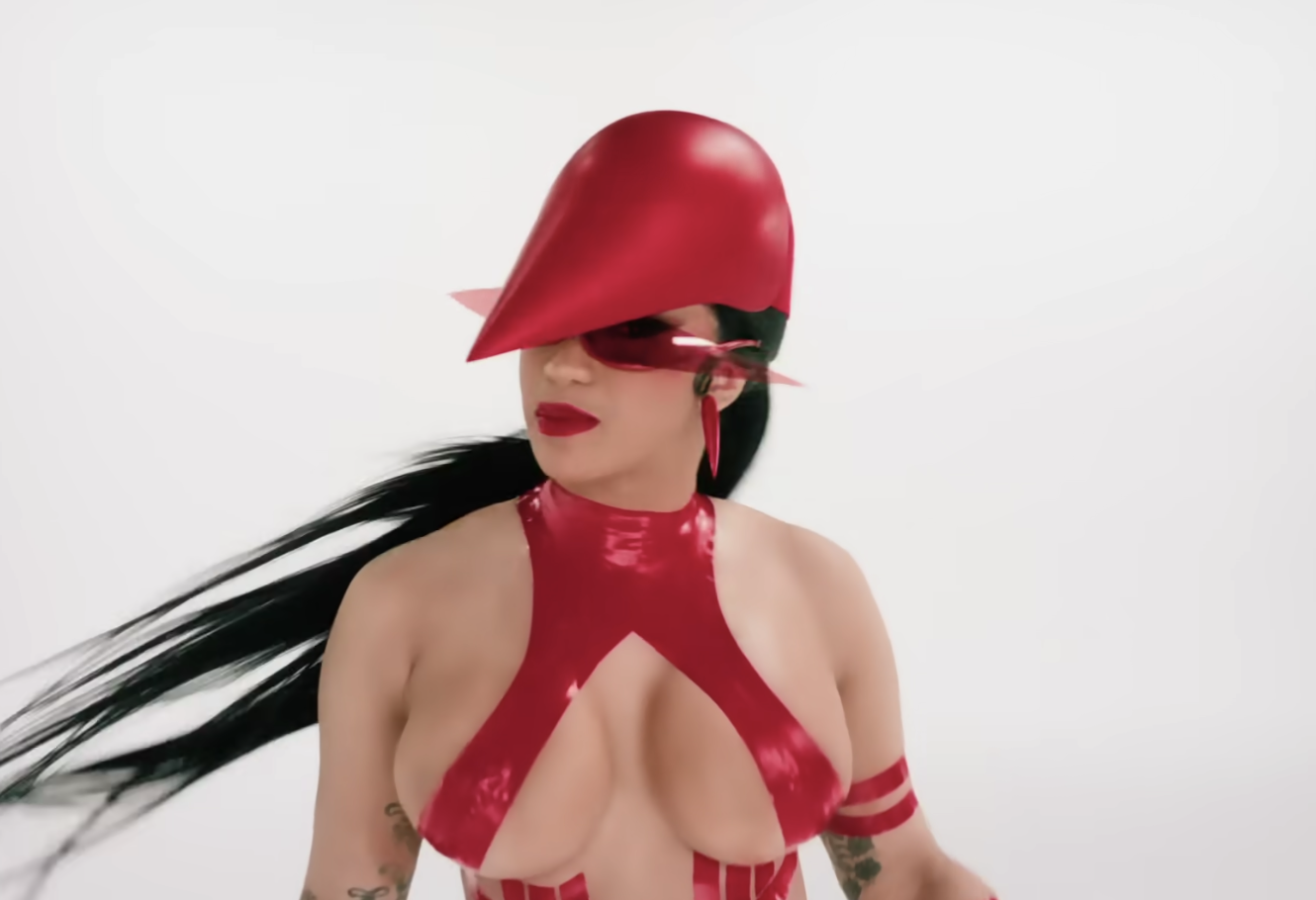As Cardi B continues her single-drop journey for 2024 (continuing to tease fans with the promise of a long overdue second album), she follows up the Missy Elliott-sampling “Like What (Freestyle)” with “Enough (Miami).” Opening the track with the repetition of “yeah” in a manner that harkens back to how she sounds at the beginning of “WAP,” Cardi says pretty much the same thing she does on “Like What (Freestyle)” about being superior to all other bitches and having more money than they do as well. The only marked distinctions between the two tracks (apart from beat) might be that Coach is name-checked in one, and Van Cleef in the other.
Both songs also mention Cardi’s “opps” “linking up” to conspire against her. In “Like What (Freestyle),” that sounds like, “First, that bitch hate me, then this bitch hate me/And somehow, they link up and they become friends, like, how?” In “Enough (Miami),” it becomes: “I see my opps linkin’ up, I’m like, ‘What in the fuck?’” Many believe Cardi is alluding to City Girls’ JT (which seems to add up via the song being titled “Enough [Miami]”—from whence City Girls hail, plus JT’s “other half” is Yung Miami) after the latter blatantly shifted to Team Nicki despite working with Cardi on 2019’s “Twerk.”
As for the visuals that accompany “Like What (Freestyle)” and “Enough (Miami),” the latter goes in an even more no-frills (and no clothes) direction (thanks to help from Patience Harding, in what marks her first music video in the role of director). Because at least “Like What (Freestyle),” directed by Cardi’s baby daddy a.k.a. “BD,” Offset, has an actual, tangible set. Even if it’s “just” a house. Albeit a lavish one. In “Enough (Miami),” Cardi takes the route that many rappers and pop stars alike before her have: going for the all-white backdrop (with some black and beige ones thrown in between). It’s a tradition that’s been employed by artists like Crystal Waters with “Gypsy Woman (She’s Homeless),” MC Hammer with “U Can’t Touch This,” Warrant with “Cherry Pie,” Madonna with “Human Nature” (and, more germinally in her career, “Lucky Star”), Taylor Swift with “Shake It Off” and, to Cardi’s chagrin, Nicki Minaj with “Barbie Tingz.” And then, most recently of all, there’s been Miley Cryus’ rash of no-frills videos featuring only stark white or black backdrops, which we saw appear in “River,” “Used to Be Young” and, most freshly, “Doctor (Work It Out).”
And yet, per Cardi, she had the song (somewhat) ready back in January of 2023, which would have given her plenty of time to create a decent music video concept for it. But maybe what the lack of concept (apart from Cardi “looking hot” in a bunch of different couture outfits) says more than anything is that nothing is actually going on in the song—apart from the repetition of her usual profanities and insults, as well as flexes about how much money she has, and how embarrassing everyone else is for being poor. Something Cardi’s cohort, Megan Thee Stallion, got across quite effectively on Traumazine. And yes, Cardi uses a Megan Thee Stallion collaborator, OG Parker, for co-production on the track, with its beat being catchier than the lyrics themselves (though one does admire the Seussian stylings of Cardi rapping, “One bitch, two bitch, old bitch, new bitch/None of y’all bitches not gon’ do shit”).
Some might say that the lack of “plot,” so to speak, has more to do with putting a spotlight on the “striking” visuals Cardi is presenting with her body and clothes alone. However, if that’s the case, then why not go another similar route to the aforementioned Megan Thee Stallion in her “Body” video, during which, despite the spartan backdrops and non-narrative, she was able to at least bring back memorable choreography, in addition to providing her viewers with cameos galore throughout the video. In fact, it seemed Megan was pulling inspiration from more artful videos of the late 90s and early 00s, including Hype Williams’ “What’s It Gonna Be?!” by Busta Rhymes and Janet Jackson.
The trend in, let’s say, “lackluster” video concepts that have no narrative, but rely, instead, only on a lot of changing “looks” to distract the audience from no “there” being there has likely been compounded by both the pandemic and social media. It was during the former that musicians were forced to scale way back in terms of resources that could create grandiose concepts (see: Charli XCX’s “Claws” video). And perhaps seeing that one didn’t really need to keep bothering with much in the way of bombast (why not save budgets for something else?) since people’s expectations had already been so lowered, the necessity gave way to becoming increasingly the norm.
As for social media’s influence, the fact that the masses have been able to contribute to the everyman aesthetic of banality over the years—reaching an apex with TikTok videos—has surely played some part in trickling back into the mainstream. Although Cardi could have delivered a much more elaborate music video (e.g., some kind of riff on Miami Vice or Scarface), she chose to keep it simple, relying, as is the stripper’s way, on her body to be the main attraction.
The result is a music video that’s indistinguishable from most others (whether from Cardi B herself or any of her contemporaries), as viewers are made to keep forgetting what the pinnacle of the art form was ever like before this period of low budgets and laziness (at least storyline-wise). Gone are the days of “telling a tale” à la Britney Spears’ “Lucky” video. And when any attempt at story is made, it simply takes from some already well-known pop culture reference (as is the case with Ariana Grande’s “we can’t be friends [wait for your love]” video). Something Cardi B didn’t even feel obliged to do with this particular single.



















